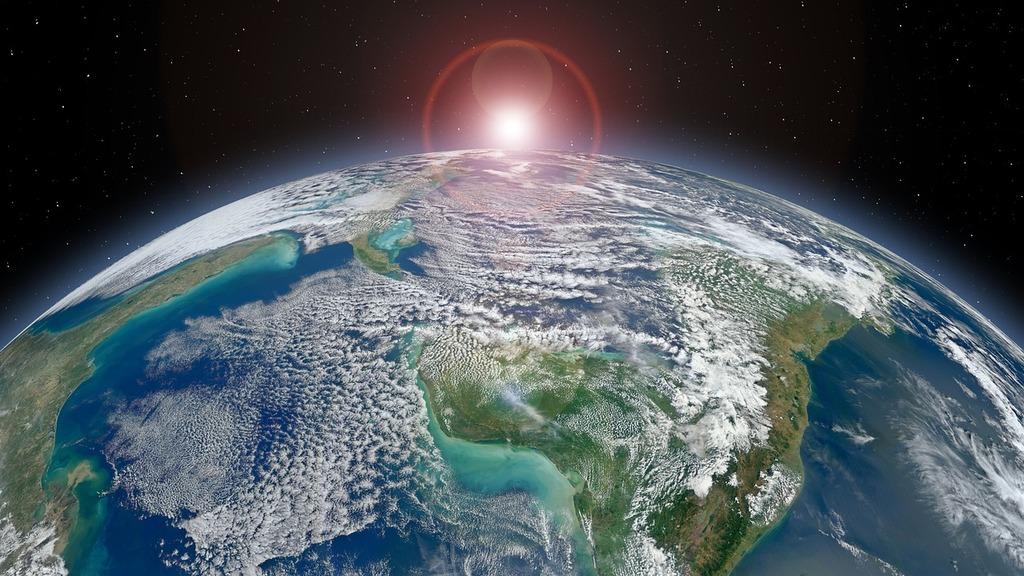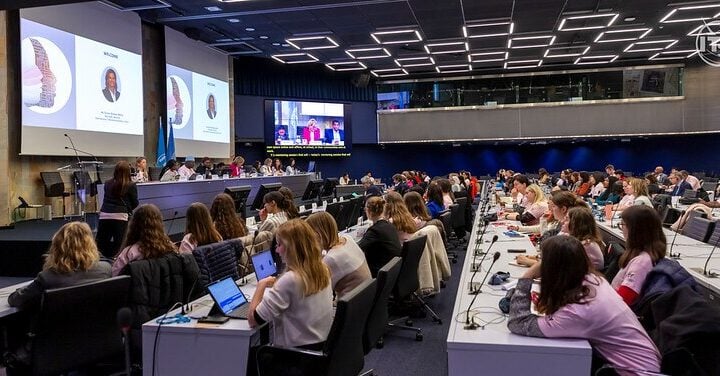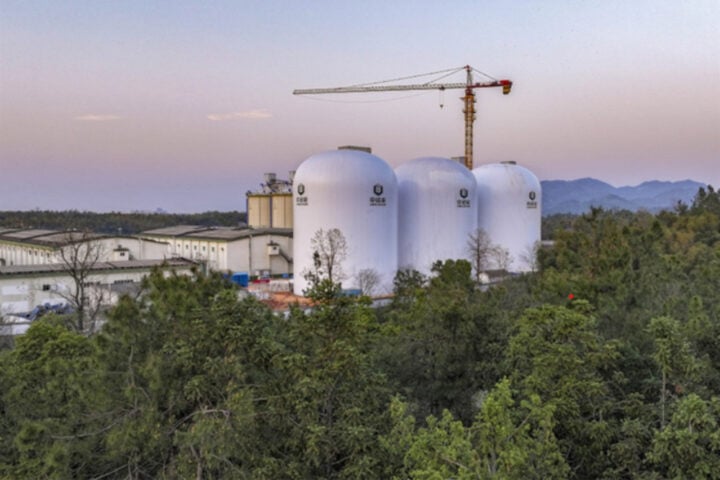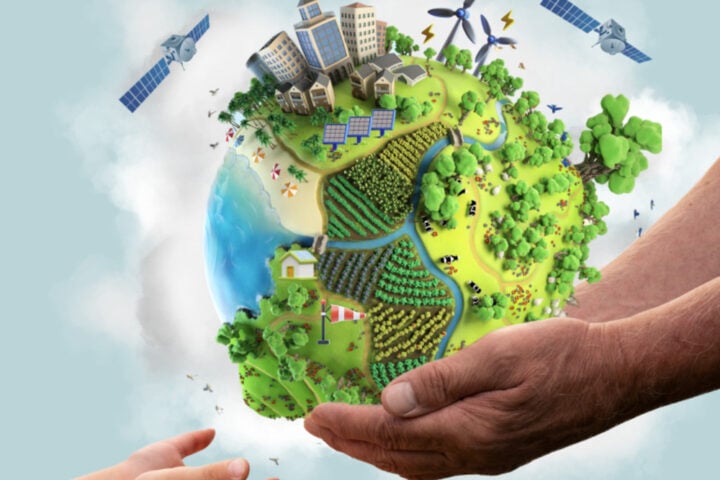Earth Day 2025, falling on Tuesday, April 22, marks the 55th anniversary of the environmental movement that began in 1970. This year’s theme, “Our Power, Our Planet,” focuses on renewable energy transformation, with a specific target to triple global clean electricity generation by 2030.
Coordinated by EARTHDAY.ORG, this year’s events are expected to reach 1 billion participants across 192 countries, making it the largest secular observance worldwide. The emphasis on renewable energy—solar, wind, hydroelectric, geothermal, and tidal—reflects mounting evidence that these sources can provide clean, affordable, and sustainable electricity.
“Being on the ranch, absent the buildings and highways of cities, we’re really able to see the four seasons of the year in all their dramatic glory,” says Ree Drummond, whose family ranch in Oklahoma exemplifies conservation efforts in action. “Watching the day-by-day transformation of brown-gray earth to vibrant green abundance is truly something to behold.”
The History of Earth Day
The first Earth Day emerged in 1970 when Senator Gaylord Nelson of Wisconsin, concerned about environmental degradation, joined forces with Congressman Pete McCloskey and activist Denis Hayes. They strategically chose April 22 to avoid conflicts with college exams and spring breaks, while ensuring favorable weather for outdoor activities.
What began with 20 million Americans demonstrating for environmental protection has evolved into a global movement. That initial momentum led directly to the creation of the U.S. Environmental Protection Agency and passage of landmark legislation including the Clean Air Act, Clean Water Act, and Endangered Species Act.
Economic and Social Benefits of Renewable Energy
The push to triple renewable energy generation by 2030 is backed by compelling economic data. Recent reports indicate that renewable technologies have become cost-competitive with—and in many cases cheaper than—fossil fuels. Global solar module prices have declined dramatically, making solar power increasingly viable worldwide.
This transition could create up to 14 million new jobs globally, according to verified estimates. Additionally, improved access to clean energy would benefit the 3.8 billion people currently living below the Modern Energy Minimum of 1,000 kWh per capita—a threshold linked to improved living standards.
Denis Hayes, one of Earth Day’s original organizers, has challenged the notion that fossil fuels are essential while predicting “By the 2030s the largest source of electricity generation on the planet will be solar power.”
Similar Posts
Community Engagement and Local Action
Communities nationwide are preparing diverse activities for Earth Day 2025. At the Orono Nature Center in Minnesota, Scouts BSA, Girl Scouts, and volunteers will gather on April 22 for conservation activities, including invasive buckthorn removal and educational workshops.
“Unite for Earth Day 2025 will be held at the Orono Nature Center & Learning Pavilion, 685 N. Old Crystal Bay Road, Long Lake, MN,” states the official announcement. Participants are encouraged to “dress appropriately for the weather and to work,” with gloves recommended.
Educational initiatives include the Solar United Neighbors SUN Patch program and the Cabot Creamery Co-Ops for Community sticker program, allowing scouts to earn badges while learning about environmental conservation.
Land Conservation and Indigenous Perspectives
In Oklahoma, the Drummond Ranch provides an example of conservation efforts. The family owns 433,000 acres and partnered with the U.S. Bureau of Land Management to host wild horses and burros in 2014.
This land use intersects with indigenous history. Dr. Michael Snyder, a historian at Oklahoma State University, notes the historical exploitation of Osage County resources. Everett Waller of the Osage Nation emphasizes the rights of Osage Nation on minerals, while being a chairman of the Osage Minerals Council in the past.
According to The Climate Change Resource Center, USDA, grasslands have the potential to sequester up to 3 Gt of carbon annually.
Action Steps for Earth Day 2025
Sustainable Practices
- Support regenerative agriculture, like the rotational grazing methods used at Drummond Ranch that reduce soil erosion and carbon emissions
- Reduce plastic use and adopt sustainable fashion choices
- Participate in local cleanup efforts and tree planting initiatives
Education and Advocacy
- Engage with resources from organizations like Project Learning Tree and The Nature Conservancy
- Support policies promoting renewable energy incentives, such as tax credits for solar and wind installations
- Join digital conversations using hashtags like #EarthDay2025, #OurPowerOurPlanet, and #EarthActionDay
Local Government Initiatives
Communities like Clackamas County, Oregon have developed Climate Action Plans targeting carbon neutrality by 2050, aligning with Earth Day’s objectives. These local efforts complement national and global initiatives to combat climate change.
Latest Environmental Data
Recent statistics from the U.S. Energy Information Administration show that solar and wind energy provided 14.1% of U.S. electricity in 2023 and are expected to lead the growth of U.S. power generation for the coming two years. This growth trend supports the feasibility of achieving Earth Day 2025’s goal of tripling renewable energy generation by 2030.
Kathleen Rogers, president of EarthDay.org, emphasizes the critical role of “people power” in driving this transition: “We encourage everyone to talk to your local mayor, boss, neighbors, community leaders, and local and national legislators, to explore and to champion switching to renewables.”
Conclusion
Earth Day 2025 builds on 55 years of environmental activism with a clear focus on transforming global energy systems. The theme “Our Power, Our Planet” encompasses both the technical shift to renewable resources and the collective action needed to achieve this goal.
Through community events, educational programs, and policy advocacy, Earth Day continues to evolve from its 1970 roots while maintaining its core mission: protecting our planet for future generations.
Whether you’re planting trees, removing invasive species, or advocating for renewable energy policies, Earth Day 2025 offers multiple pathways to engage with environmental conservation. As demonstrated by initiatives from scout troops to county governments, change happens at every level—and each effort contributes to the larger goal of a sustainable future.
Frequently Asked Questions
Earth Day 2025’s theme is “Our Power, Our Planet,” which focuses on renewable energy transformation. The specific goal is to triple global clean electricity generation by 2030, emphasizing solar, wind, hydroelectric, geothermal, and tidal energy sources.
Earth Day 2025 falls on Tuesday, April 22, marking the 55th anniversary of the environmental movement. It’s expected to reach approximately 1 billion participants across 192 countries, making it the largest secular observance worldwide.
Earth Day began in 1970 when Senator Gaylord Nelson of Wisconsin, Congressman Pete McCloskey, and activist Denis Hayes organized demonstrations involving 20 million Americans. This initial momentum led directly to the creation of the U.S. Environmental Protection Agency and passage of landmark legislation including the Clean Air Act, Clean Water Act, and Endangered Species Act.
Renewable technologies have become cost-competitive with—and in many cases cheaper than—fossil fuels. The transition to renewable energy could create up to 14 million new jobs globally. Additionally, improved access to clean energy would benefit the 3.8 billion people currently living below the Modern Energy Minimum of 1,000 kWh per capita, a threshold linked to improved living standards.
Individuals can participate in Earth Day 2025 through various activities including supporting regenerative agriculture, reducing plastic use, adopting sustainable fashion choices, participating in local cleanup efforts and tree planting initiatives, engaging with educational resources, advocating for renewable energy policies, and joining digital conversations using hashtags like #EarthDay2025, #OurPowerOurPlanet, and #EarthActionDay.
According to recent statistics from the U.S. Energy Information Administration, solar and wind energy provided 14.1% of U.S. electricity in 2023 and are expected to lead the growth of U.S. power generation for the coming two years. This growth trend supports the feasibility of achieving Earth Day 2025’s goal of tripling renewable energy generation by 2030.



















